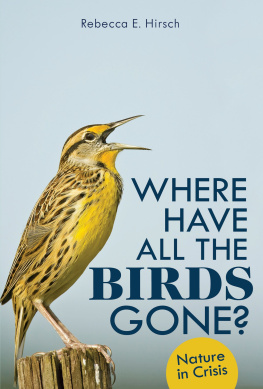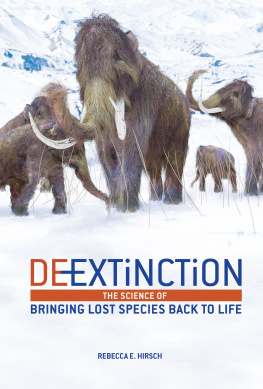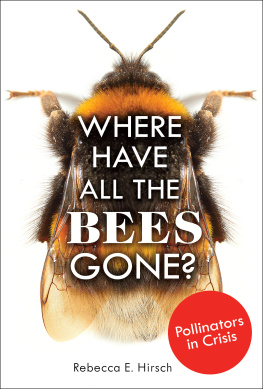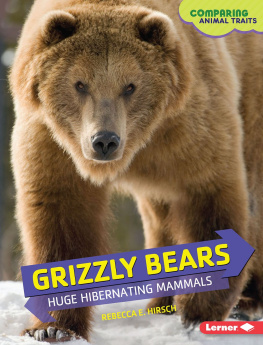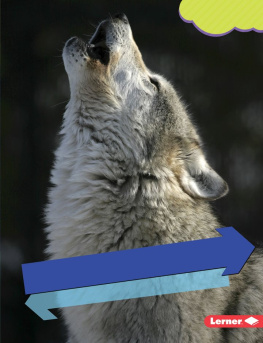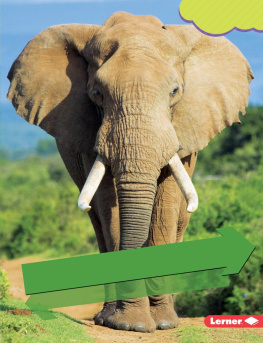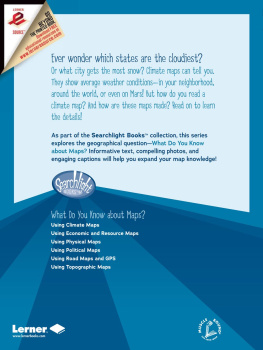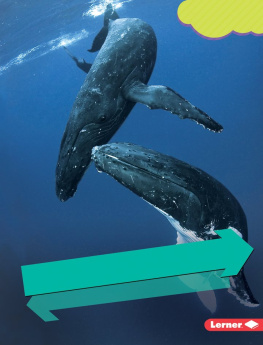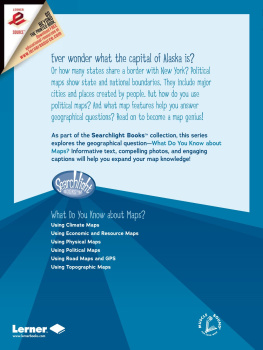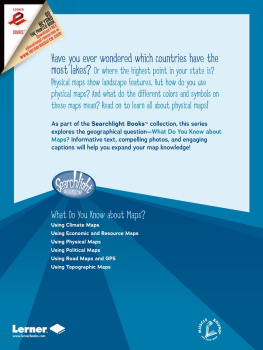Rebecca E. Hirsch - Where Have All the Birds Gone?: Nature in Crisis
Here you can read online Rebecca E. Hirsch - Where Have All the Birds Gone?: Nature in Crisis full text of the book (entire story) in english for free. Download pdf and epub, get meaning, cover and reviews about this ebook. year: 2022, publisher: Lerner, genre: Art. Description of the work, (preface) as well as reviews are available. Best literature library LitArk.com created for fans of good reading and offers a wide selection of genres:
Romance novel
Science fiction
Adventure
Detective
Science
History
Home and family
Prose
Art
Politics
Computer
Non-fiction
Religion
Business
Children
Humor
Choose a favorite category and find really read worthwhile books. Enjoy immersion in the world of imagination, feel the emotions of the characters or learn something new for yourself, make an fascinating discovery.
- Book:Where Have All the Birds Gone?: Nature in Crisis
- Author:
- Publisher:Lerner
- Genre:
- Year:2022
- Rating:3 / 5
- Favourites:Add to favourites
- Your mark:
- 60
- 1
- 2
- 3
- 4
- 5
Where Have All the Birds Gone?: Nature in Crisis: summary, description and annotation
We offer to read an annotation, description, summary or preface (depends on what the author of the book "Where Have All the Birds Gone?: Nature in Crisis" wrote himself). If you haven't found the necessary information about the book — write in the comments, we will try to find it.
Rebecca E. Hirsch: author's other books
Who wrote Where Have All the Birds Gone?: Nature in Crisis? Find out the surname, the name of the author of the book and a list of all author's works by series.
Where Have All the Birds Gone?: Nature in Crisis — read online for free the complete book (whole text) full work
Below is the text of the book, divided by pages. System saving the place of the last page read, allows you to conveniently read the book "Where Have All the Birds Gone?: Nature in Crisis" online for free, without having to search again every time where you left off. Put a bookmark, and you can go to the page where you finished reading at any time.
Font size:
Interval:
Bookmark:

To Rick, for his never-ending support
Text copyright 2022 by Rebecca E. Hirsch
All rights reserved. International copyright secured. No part of this book may be reproduced, stored in a retrieval system, or transmitted in any form or by any meanselectronic, mechanical, photocopying, recording, or otherwisewithout the prior written permission of Lerner Publishing Group, Inc., except for the inclusion of brief quotations in an acknowledged review .
Twenty-First Century Books
An imprint of Lerner Publishing Group, Inc.
241 First Avenue North
Minneapolis, MN 55401 USA
For reading levels and more information, look up this title at www.lernerbooks.com .
Illustrations on pp. 6, 15, 29, and 74 by Laura K. Westlund.
Main body text set in ITC Caslon 224 Std.
Typeface provided by Adobe Systems.
Library of Congress Cataloging-in-Publication Data
Names: Hirsch, Rebecca E., author.
Title: Where have all the birds gone ? : nature in crisis / Rebecca E. Hirsch.
Description: Minneapoli s : Twenty-First Century Books, [2022 ] | Includes bibliographical references and index . | Audience: Ages 131 8 | Audience: Grades 7 9 | Summary: In the face of rapidly declining bird populations, read about the vast impacts birds have on ecosystems, food systems, and our mental health and what we can do to protect them Provided by publisher.
Identifiers: LCCN 2021039521 (print ) | LCCN 2021039522 (ebook ) | ISBN 781728431772 (library binding ) | ISBN 781728445441 (ebook)
Subjects: LCSH: BirdsConservationJuvenile literature . | Bird populationsJuvenile literature.
Classification: LCC QL676.5 .H57 2022 (print ) | LCC QL676.5 (ebook ) | DDC 639.9/78dc23
LC record available at https://lccn.loc.gov/2021039521
LC ebook record available at https://lccn.loc.gov/2021039522
Manufactured in the United States of America
1-49564-49543-10/6/2021
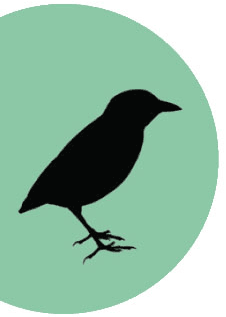
Three Billion to Zero
I have stood for hours admiring the movements of these birds. I have seen them fly in unbroken lines from the horizon, one line succeeding another from morning until night.
Potawatomi activist and writer Simon Pokagon
I n May 1850, Simon Pokagon stepped out of his shelter. The twenty-year-old Potawatomi tribal leader was camped out near the headwaters of the Manistee River in northern Michigan. There, a loud, strange rumbling sound greeted him. It sounded like an army of horses with sleigh bells advancing through the woods. Pokagon listened carefully. No, he decided, the noise wasnt the beating of horse hooves and the ringing of sleigh bells. It must be distant thunder. Yet the sky was clear.
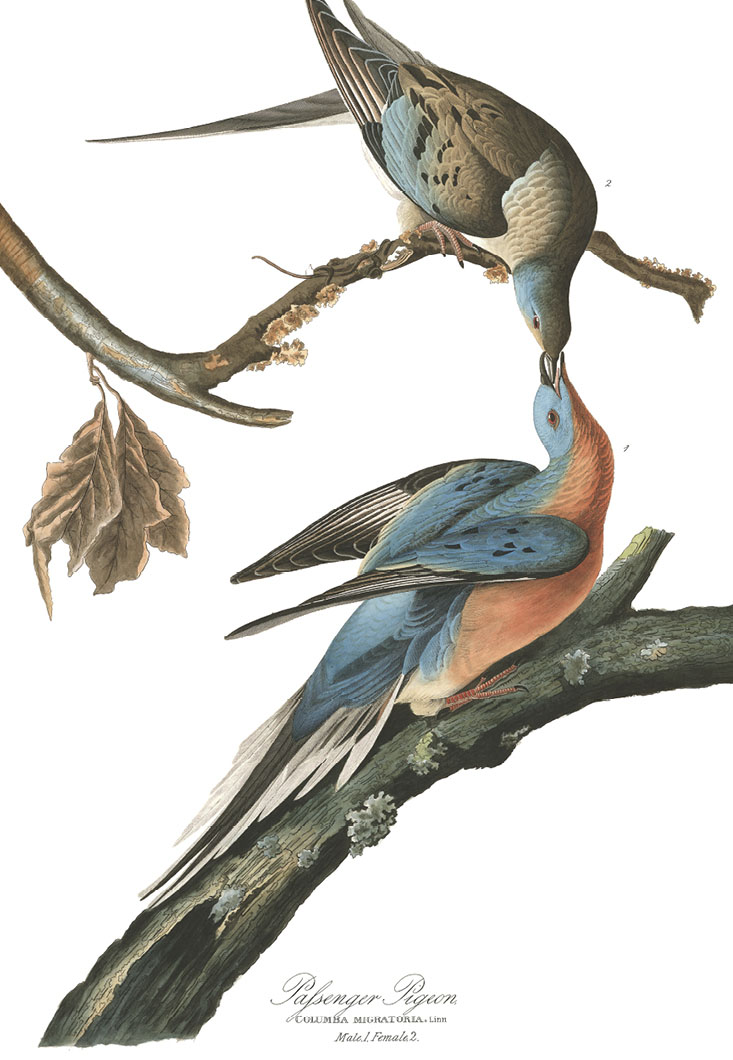
American artist John James Audubon made this painting of male and female passenger pigeons in the early 1800s.
Nearer and nearer came the mysterious sound. At last, he saw the source of the rumblinga flying mass of millions of pigeons. He stood as still as a statue, with birds flying all around him. They passed like a cloud through the branches of the big trees, through the underbrush and over the ground, he later wrote. They were passenger pigeons ( Ectopistes migratorius ), pretty birds a little bigger than mourning doves. The males were slate blue on top with coppery undersides. The females were brownish. The birds flapped their long, tapered wings and landed all aroundon the branches, on the ground, on his head, on his shoulders. The fluttering of their wings and the ringing of their chatter were deafening.
Pokagon had watched passenger pigeons all his life. In the early nineteenth century, when he was a boy, they were likely the most numerous birds on the planet. Year after year, roughly three billion passenger pigeons migrated north and south through the eastern and midwestern United States and Canada. They flew as far north as Ontario, Quebec, and Nova Scotia and as far south as Texas, Louisiana, Alabama, Georgia, and Florida.
The size of the flocks was staggering. They were so immense that they darkened the skies for days as they passed overhead. One flock, estimated at one billion birds, stretched 300 miles (483 km) long and took fourteen hours, from sunup to sundown, to pass overhead. Many years later, Pokagon described watching the birds flow like some great river across the sky.
Billion-Bird Migration
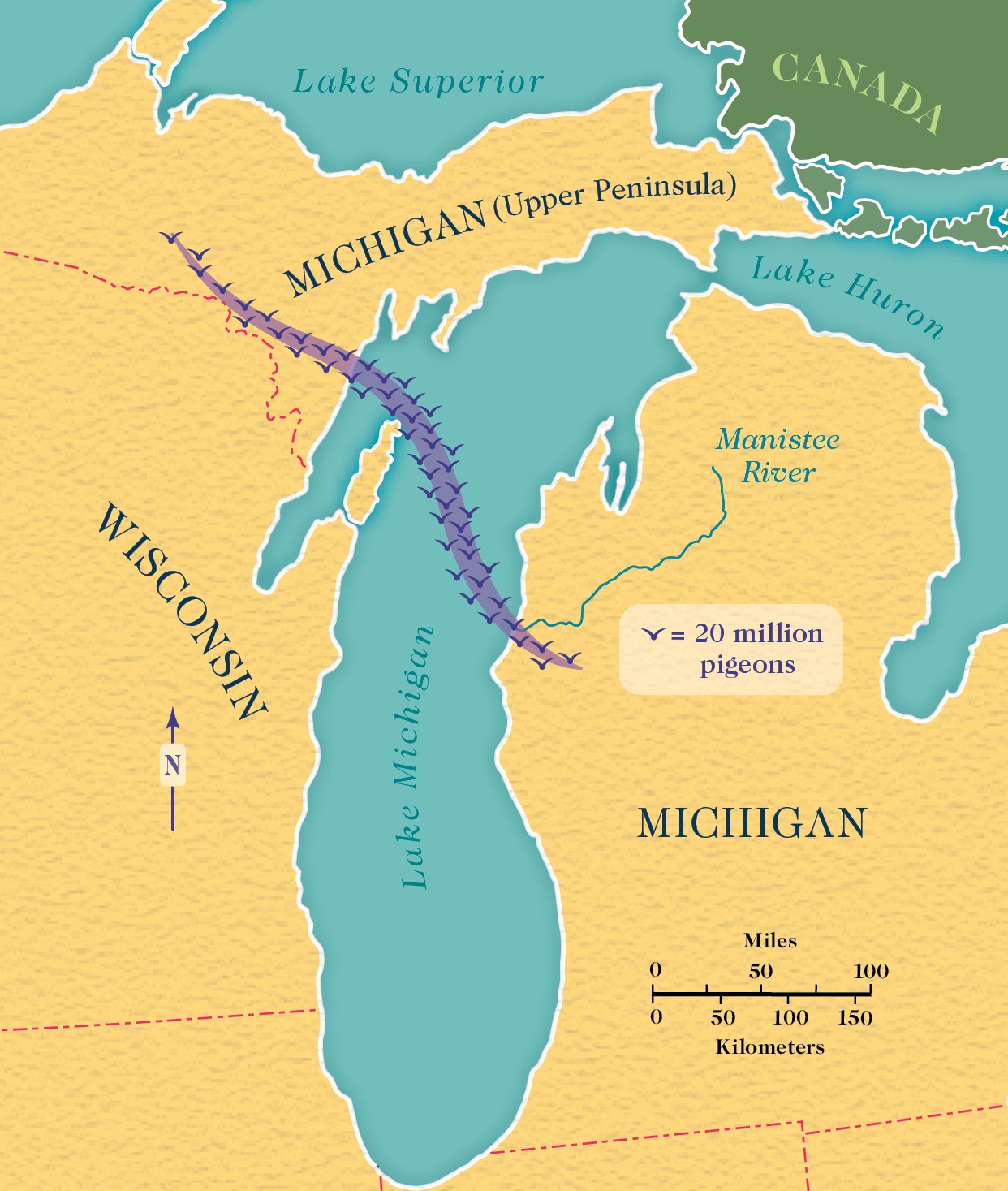
The flock of passenger pigeons witnessed in 1850, if viewed from above, would have stretched approximately this far across northern Michigan.
Before the nineteenth century, passenger pigeons lived a secure existence in North America. They migrated through the eastern forests, searching for the acorns and other nuts that nourish them. Each spring they headed to the Great Lakes region to breed. The birds that Pokagon witnessed on the Manistee River were part of an enormous flock descending into the forest to mate and nest.
In 1895, as Pokagon neared the end of his life, he recalled, I have stood by the grandest waterfall of America... yet never have my astonishment, wonder, and admiration been so stirred as when I have witnessed these birds drop from their course like meteors from heaven. But by the time he wrote those words, passenger pigeon flocks numbered in the dozens rather than the millions or billions. The birds were almost gone.
Where did they all go?
In the nineteenth century, passenger pigeons collided with two deadly forces: overhunting and destruction of their forests. The large flocks often damaged food crops, so farmers retaliated by shooting the birds. Some hunters killed the pigeons merely for sport. Others shipped them across the country to be sold as food. And hunting passenger pigeons was easy. The flocks were so thick and so vast that a hunter could easily shoot a thousand birds in one outing.
By 1850, the year Pokagon was camping on the banks of the Manistee River, hunters were killing the birds faster than they were reproducing. As their numbers dwindled, some states passed laws to limit or restrict the hunting of passenger pigeons, but people widely ignored the laws. Meanwhile, loggers were clearing woods to make way for cities and farms. The trees they cut down were used as building material and burned for fuel. As large tracts of forest disappeared from the East and Midwest, passenger pigeons lost their habitat.
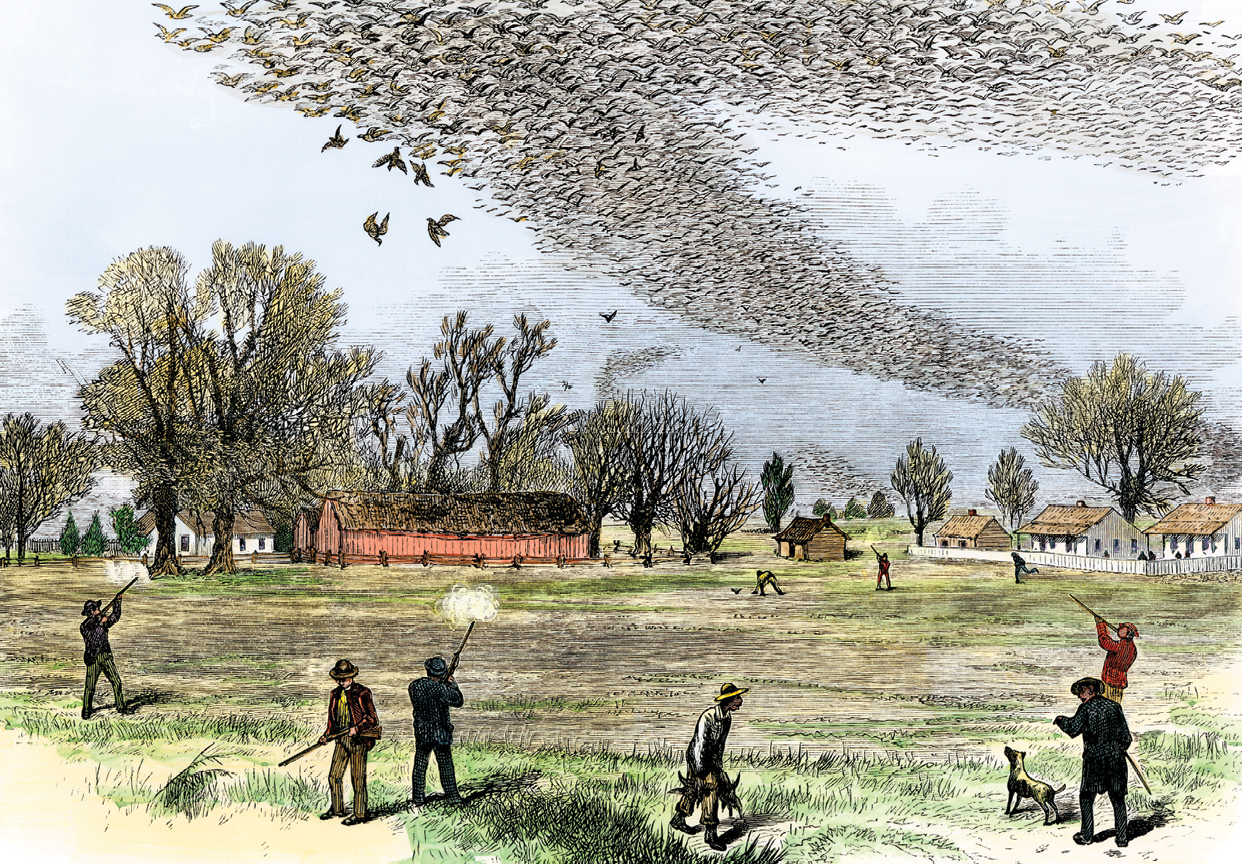
This illustration from the 1870s shows American hunters shooting passenger pigeons.
The population collapsed in a downward spiral and never recovered. The birds destruction alarmed some people. The wild pigeon, formerly in flocks of millions, has entirely disappeared from the face of the earth, said US representative John F. Lacey of Iowa. We have given an awful exhibition of slaughter and destruction, which may serve as a warning to all mankind. Lacey introduced the first national wildlife protection law, which Congress enacted in 1900. The Lacey Act made it a federal crime to sell illegally hunted game across state lines. The law came too late to save passenger pigeons. In 1902 a hunter in Indiana shot a passenger pigeon in the countryside. After that, no one saw any more passenger pigeons in the wild, although some lived in zoos. In 1909 the American Ornithologists Union, an association of scientists who studied birds, offered a $3,000 reward to anyone who could locate nesting passenger pigeons. The search lasted for three years, but no nests or birds were found. The very last passenger pigeon, a captive bird called Martha (named for US first lady Martha Washington), died in her cage on September 1, 1914, at a zoo in Cincinnati, Ohio. In less than a single human lifetime, the population of passenger pigeons had gone from three billion to zero.
Font size:
Interval:
Bookmark:
Similar books «Where Have All the Birds Gone?: Nature in Crisis»
Look at similar books to Where Have All the Birds Gone?: Nature in Crisis. We have selected literature similar in name and meaning in the hope of providing readers with more options to find new, interesting, not yet read works.
Discussion, reviews of the book Where Have All the Birds Gone?: Nature in Crisis and just readers' own opinions. Leave your comments, write what you think about the work, its meaning or the main characters. Specify what exactly you liked and what you didn't like, and why you think so.

